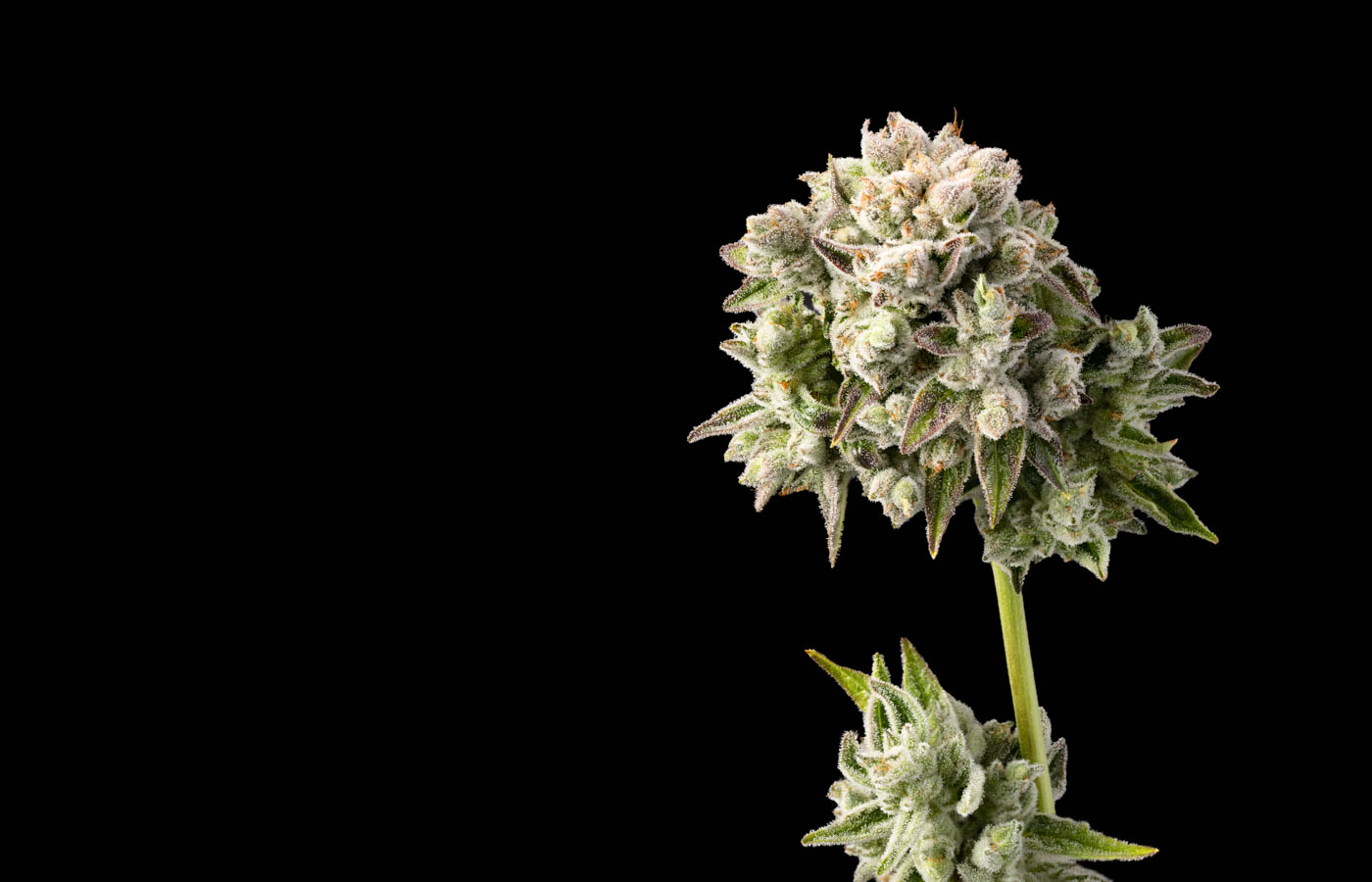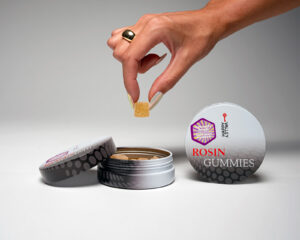No two cannabis cultivars are identical. Though there is some debate, most experts agree there are thousands of cannabis cultivars, each with their own unique biology and experience when consumed. Some cannabis flower has bright orange pistils, some have fragrant piney scents, some are bushy with wide leaves, and some are densely dusted with trichomes, as if they were rolled in very fine sugar granules. Another variable in cannabis flower is its “dryness” versus its “stickiness.”
Some cannabis users that are accustomed to cannabis from the illegitimate market (sometimes called the black market) have preconceived notions about the relative dryness and stickiness of cannabis flower. The relationship between dryness, stickiness, and quality in cannabis flower is much more complex than most people think.
Sticky Cannabis vs. Moist Cannabis
There is an important distinction that should be made regarding cannabis stickiness and moisture. Moist cannabis is often mistaken with sticky cannabis, and vice versa. To know the difference, it’s important to understand the curing and drying process.
Curing and drying cannabis
In the last stages of cultivation, cannabis flower is dried, trimmed, and cured. Proper drying and curing increases the potency of the cannabis flower, and also increases the shelf life. The process of drying, trimming, and curing can take anywhere from one to six months, and it varies depending on the cultivar, the drying and curing environment, and the specific methods.
Improper drying and curing makes cannabis less potent, with harsher smoke. Many of the cannabinoids and terpenes are sensitive to temperature and humidity. Rushing the process, improper drying and curing environments, or heating the flower to dry it diminishes its potency and terpenes. Curing ensures THCA is converted to THC (the psychoactive cannabinoid responsible for the “high”), and terpenes degrade outside of their ideal temperatures and humidities. Additionally, excessively wet or moist cannabis produces harsher smoke, a higher chance of mold, and lower potency.
Unfortunately, mistaking moisture for stickiness is commonplace, especially among cannabis users that grew accustomed to flower from the illegitimate market.
Illegitimate market cannabis and moisture
Before Adult Use and Medical Use were legal in certain U.S. states, the illegitimate market was responsible for all cannabis consumption. During the years of cannabis prohibition, illegitimate market cultivators neglected proper curing and drying for three reasons:
- Moist cannabis is heavy: Water has weight. Depending on the cultivar, its wet weight (pre-dried) is anywhere from 60-67% heavier than fully dried and cured cannabis. In other words, properly dried and cured cannabis weighs 33-40% of the wet weight at harvest. When illegitimate market cannabis cultivators sell by weight, they are incentivized to sell wetter cannabis for more money.
- Moist cannabis is confused with sticky cannabis: Because stickier cannabis is associated with higher potency, illegitimate market cultivators can trick their clientele into thinking improperly dried and cured cannabis is sticky. The exact opposite is true. Wet or moist cannabis has less cannabinoids and terpenes, with a harsher smoke.
- Making a quick buck: Proper drying and curing takes months. On the illegitimate market, cultivators can make more money by selling moist cannabis without taking the time to fully dry and cure it. Cultivators looking for a quick turnaround on a cannabis crop are more likely to sell moist cannabis as sticky cannabis.
As legal cannabis cultivators overtake the illegitimate market, some cannabis buyers mistake properly dried and cured flower for stale, non-sticky, or old. Users that grew accustomed to the wet cannabis from the illegitimate market are especially likely to make this mistake.
On the other extreme, overly dry cannabis flower can have a huge effect on the cannabis quality.
Why is Some Cannabis Sticky?
Some cannabis is stickier than others because of its trichome and resin content. As mentioned before, each cannabis cultivar has its own unique makeup, with differing levels of cannabinoids.
Generally speaking, the more cannabinoids are present, the more resinous (sticky) it will be. A high-THC cultivar is likely to be stickier than lower potency flower, with some important caveats.
Trichomes and cannabis stickiness
An important component in the stickiness of cannabis comes from trichomes. Cannabis plants have three distinct trichome types, which are resinous glands on cannabis plants that make it sticky. These three trichomes are responsible for production of cannabinoids, terpenes, and other cannabis compounds:
- Bulbous trichomes: Bulbous trichomes are the smallest of the three, and are barely visible. Bulbous trichomes cover the cannabis plant, made up of a tiny stalk with a resin-secreting gland at its tip. The orb-like shape of the resin secretion is responsible for this trichome’s “bulbous” name.
- Capitate-sessile trichomes: Capitate-sessile trichomes are slightly larger than bulbous trichomes, and cover more of the cannabis plant. Like the bulbous trichome, these are made up of a stalk with a round gland on top, but are about three times the size.
- Capitate-stalked trichome: At roughly five times the size of capitate-sessile trichomes, capitate-stalked trichomes are the largest and most visible trichomes on the cannabis plant. Capitate-stalked trichomes develop during the flowering stage of growth, and yield the highest percentage of cannabinoids.
In addition to cannabinoid production, trichomes protect the plant against fungus, ultraviolet rays, and pests that damage crops. The resin produced by trichomes is extremely sticky and thick, like dried honey. Since this resin contains the cannabinoids and terpenes unique to the cultivar, the stickier the flower, the more potent it is.
Why is Some Cannabis Dry?
All cannabis plants are dried and cured after being harvested. That said, cannabis can be overdried. According to “Marijuana Harvest: Maximizing Quality and Yield in Your Cannabis Garden,” the “sweet spot” dryness in cannabis can be achieved at the following moisture levels:
- Drying ends: 14-15%
- Curing ends: 11-12%
- Pleasant smoke: 10-12%
Anything below 10% moisture will yield an overly harsh, unpleasant smoke. There are some methods to reintroduce moisture to overly dry cannabis, but much of the cannabinoids and terpenes will be affected. The highest quality and most potent cannabis flower is never overdried.
Lower potency cannabis flower
Sticky, pungent high-THC cultivars are not for everyone. Cannabis flower comes in a variety of potencies and yields a variety of distinct experiences. For inexperienced cannabis users that have not developed a tolerance for cannabis, lower-THC cannabis is actually desirable. Some cannabis users like to smoke low doses of flower over longer periods, as opposed to a spike in THC levels. Non-sticky cannabis is not necessarily lower quality, but it is usually less potent than stickier cultivars.
How long does it take for cannabis to go bad?
If stored correctly, cannabis flower can be smoked for a long time after its drying and curing. In the ideal light, temperature, humidity, and storage material, cannabis flower can remain relatively fresh and potent for six months to a year. A lot of variables are at play, and some cannabis cultivars will keep longer than others, but proper storage goes a long way towards maintaining ideal cannabis moisture. If your cannabis is prematurely dry after ideal storage conditions, there’s a good chance the cannabis was not dried or cured properly to begin with.
Is dry weed okay to smoke?
Though overly dry cannabis is not ideal, it can still be smoked. Anything beneath 10% moisture could be harsh, and the lower the moisture content below that, the harsher and less potent the cannabis will be.
One alternative to smoking overly dry cannabis is to use it for making edibles. Dry buds are ideal for decarboxylation, where ground cannabis is baked to activate THC for cooking. Sometimes using dry cannabis to make edibles is preferable to smoking dry flower or disposal.
Learn More About Cannabis
At Happy Valley, we believe education is the key to unlocking the best cannabis experience possible. Read our free guide, The Ultimate Guide to Cannabis Science for insights into the complex interactions between cannabis and human biology, from THC to terpenes and the endocannabinoid system. Additionally, we recommend becoming a Happy Valley insider to stay informed on special pricing deals for our Massachusetts dispensaries, delivered right to your inbox.




